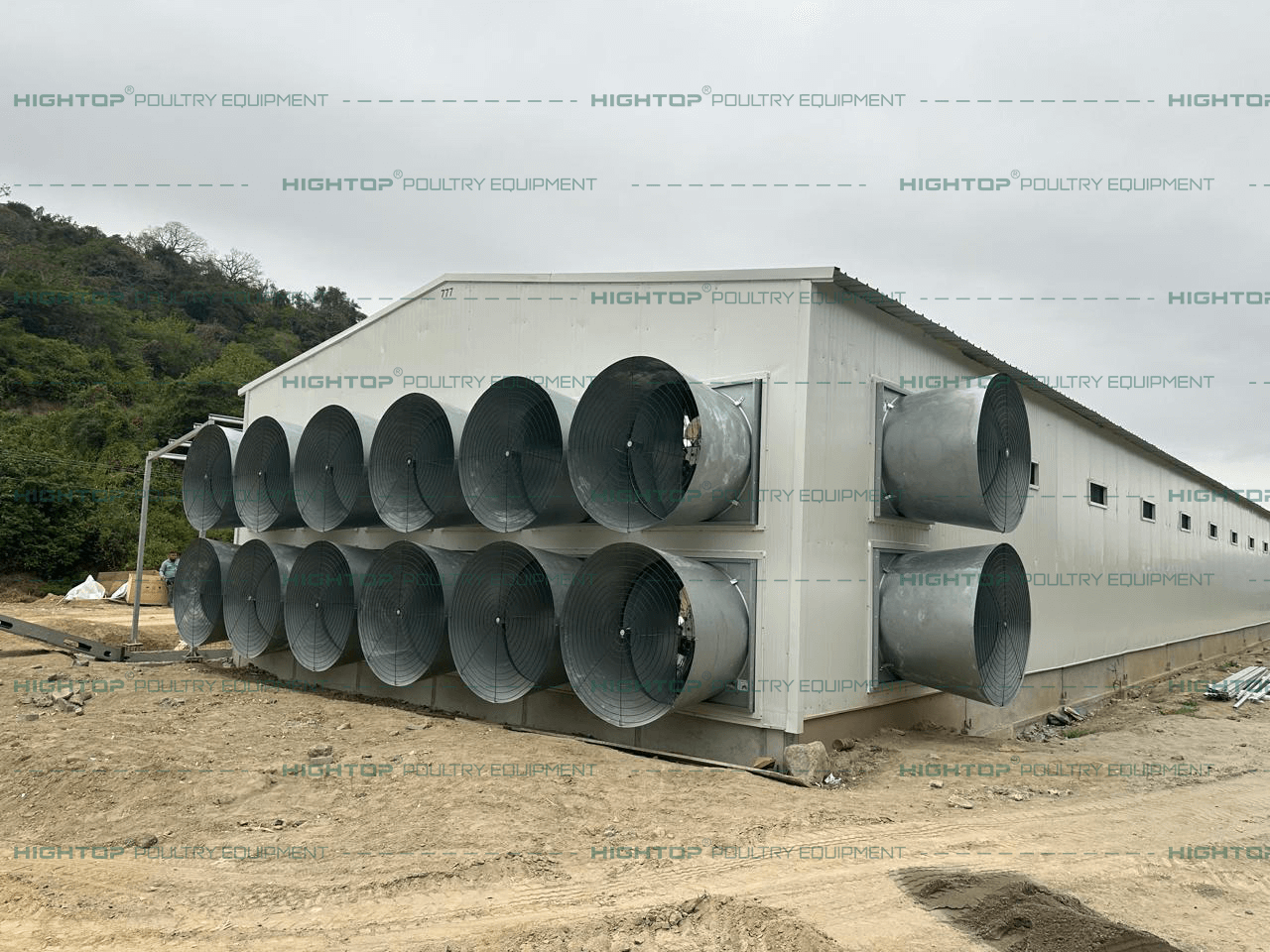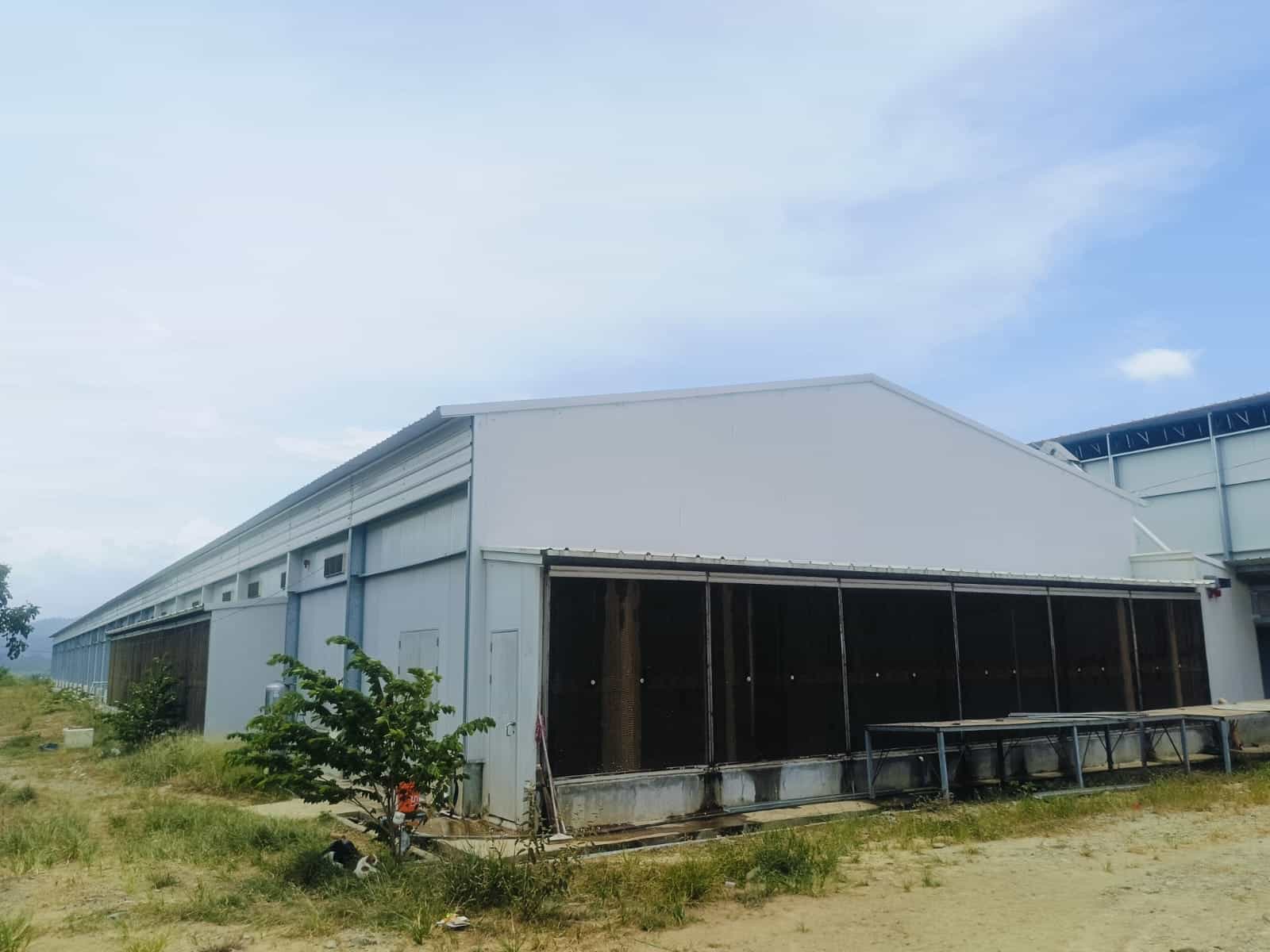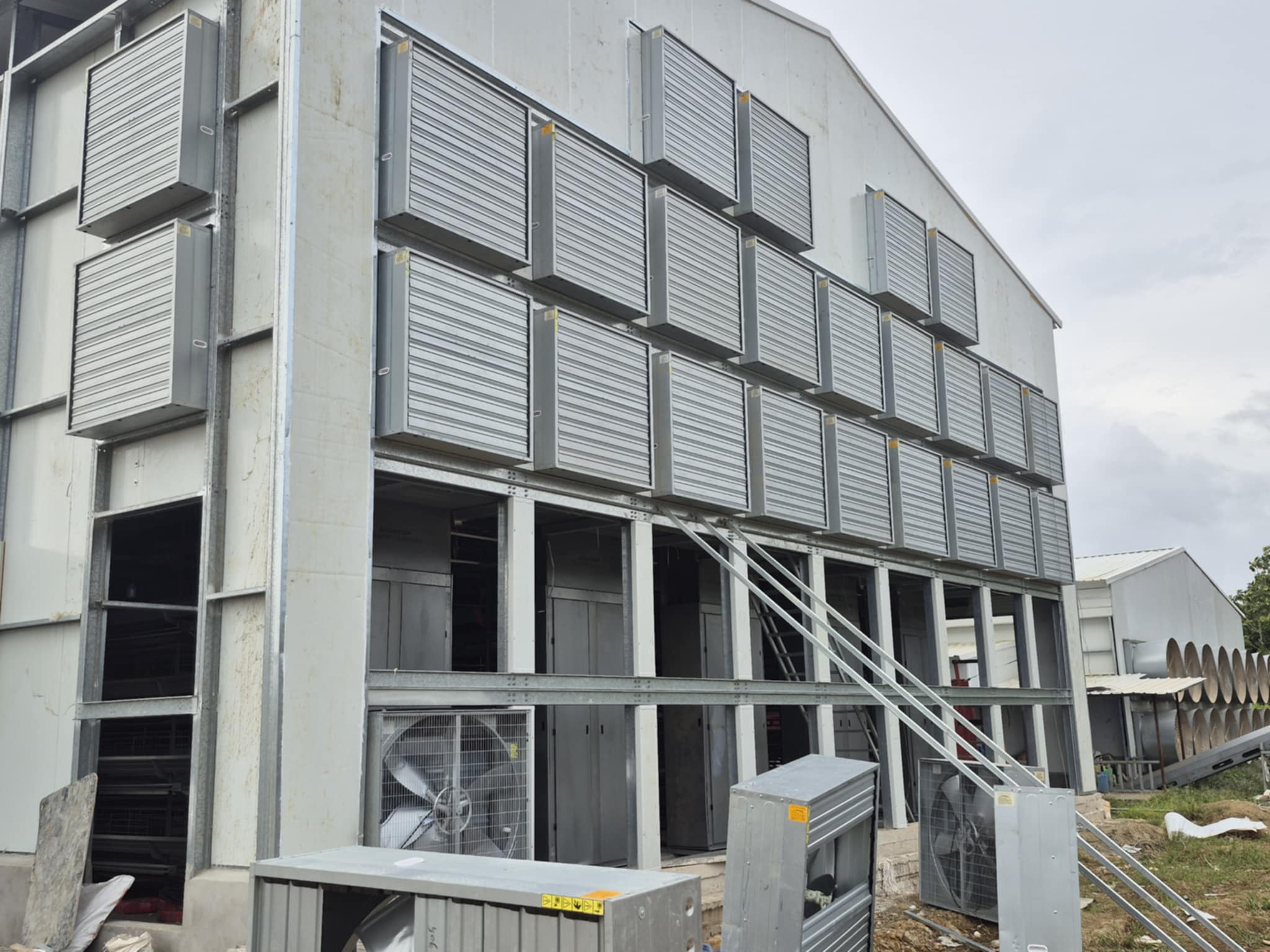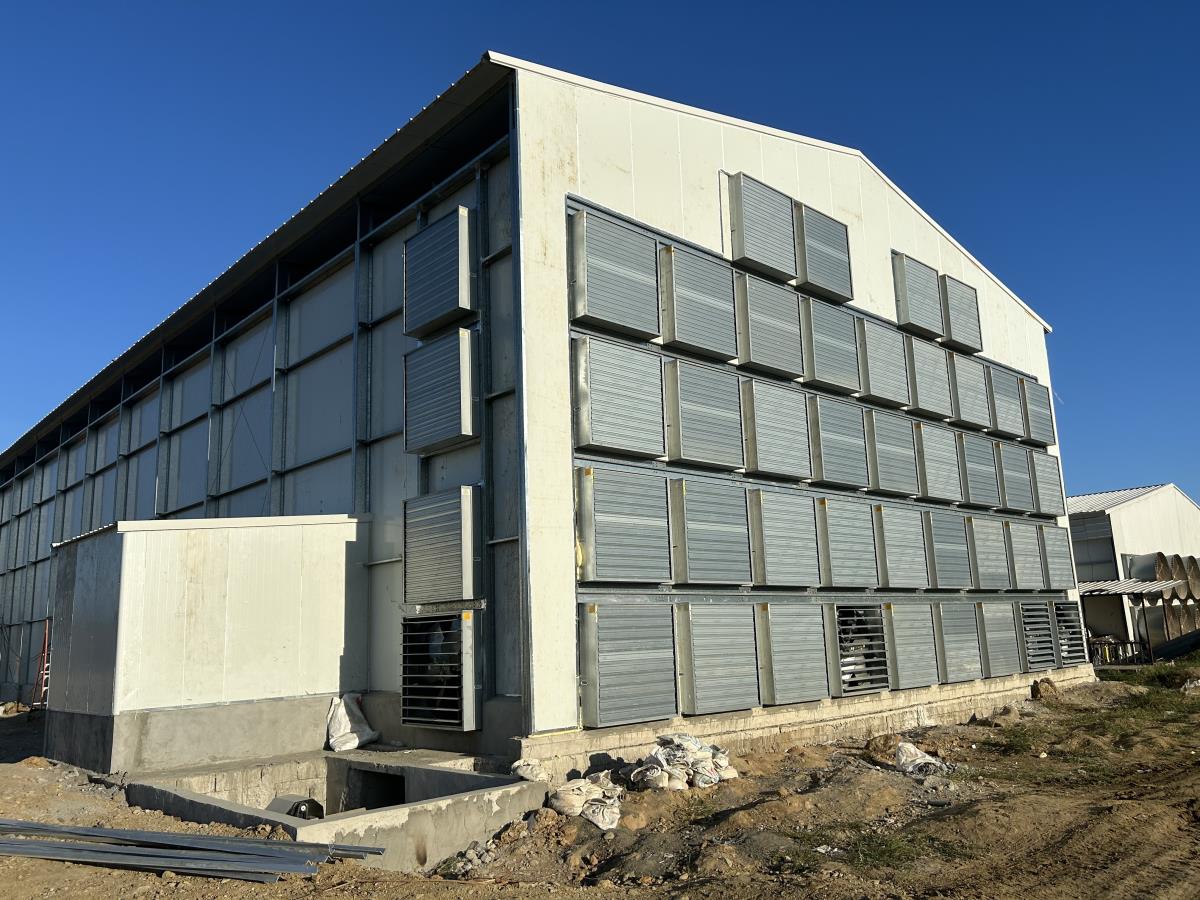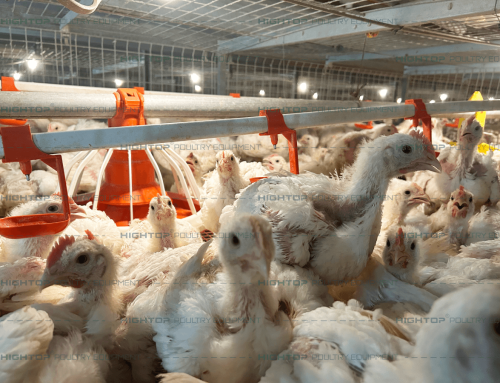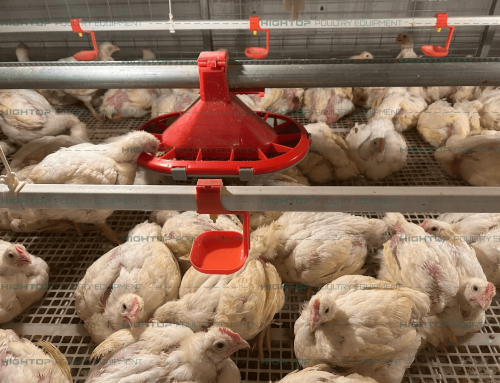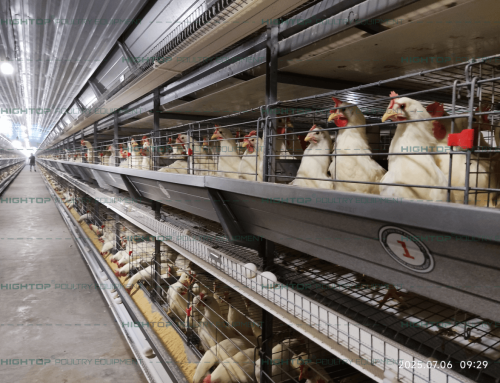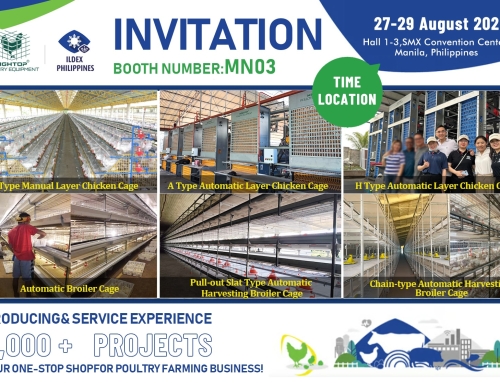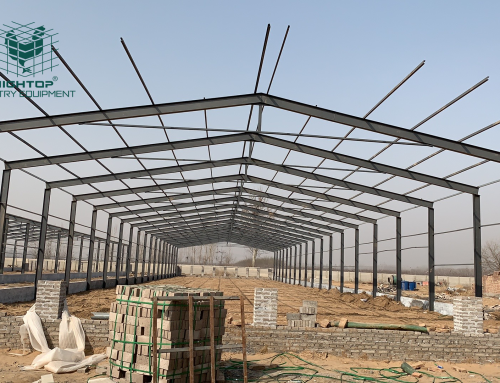How to Control the Temperature of the Chicken House
The closed laying hen house needs to be equipped with the following equipment:
Environmental control equipment: fan, wet curtain (cooling), heater (winter insulation), temperature and humidity sensor.
Lighting system: automatic dimming LED lights to simulate natural light cycles.
Feeding system: automatic feeding line, feed silo.
Drinking system: nipple drinker, water line.
Egg collection equipment: automatic egg collection conveyor belt, egg warehouse.
Manure cleaning equipment: conveyor belt manure cleaning machine.
Monitoring system: environmental parameter (temperature and humidity, CO₂, ammonia) monitor.
Disinfection equipment: spray disinfection machine.
The best temperature and humidity for laying hens
Temperature: The optimum temperature during the egg-laying period is 18–25℃ (higher temperature is required during the chick stage, and gradually decreases with age).
Humidity: The ideal range is 60–70%, avoiding excessively high (>80%), which can cause respiratory diseases, or too low (<50%), causing dust problems.
Optimal negative pressure value for closed chicken houses
Chicken house size: 104m×15m×4m, raising 50,000 laying hens.
Recommended negative pressure value: generally 20–30 Pa, which needs to be adjusted according to the chicken house’s airtightness and airflow uniformity.
Recommendation: Initially set to 25–30 Pa, observe the air distribution effect through the smoke test, and avoid dead corners.
Configuration summary
| Scenario | Normal summer(10m³/h/unit) | Extreme high temperature and high humidity (15m³/h/unit) |
| Total air volume demand (m³/h): | 500,000 | 750,000 |
| Number of fans (42,100 m³/h) | 12 units + 2 spares | 18 units + 2 spares |
Fan configuration calculation
Known conditions:
Single fan air volume (-25Pa): 42,100 m³/h
Maximum ventilation demand in summer: 10 m³/h/hen (ventilation standard for laying hens in a high temperature environment).
Calculation steps:
Total required air volume = 50,000 hen × 10 m³/h/hen = 500,000 m³/h
Number of fans = total air volume ÷ single fan air volume = 500,000 ÷ 42,100 ≈ 11.87 fans
Actual configuration: round up, 12 fans are recommended, and 1-2 additional fans are reserved for backup (a total of 13-14 fans).
Verification:
Chicken house volume = 104×15×4 = 6,240 m³
Ventilation times/hour = total air volume ÷ volume = 500,000 ÷ 6,240 ≈ 80 times/hour (meets the requirements of a high temperature environment).
Conclusion: At least 12 fans with an air volume of 42,100 m³/h should be configured, and spare fans should be considered.
Note: In actual application, the number of fans in operation should be adjusted dynamically according to the season, reducing the ventilation volume to the minimum in winter (about 1.5 m³/h/bird) and running at full load in summer.
The above are the optimal environmental parameters for closed chicken houses under normal circumstances. However, in countries like the Philippines, tropical weather country, the temperature is too high in summer, and the cooling pad cannot effectively cool down. At this time, the wind speed should be increased to reduce the perceived temperature.
Fan configuration adjustment principle
Goal: Through high wind speed (≥2.5 m/s), a wind cooling effect is formed on the chicken surface, which can reduce heat stress even if the temperature does not drop.
Ventilation volume requirements:
Extreme high temperature (>35℃): 12–15 m³/h/bird is required (10 m³/h/bird in normal summer).
High humidity environment (>80%): Appropriately increase the ventilation frequency to dilute the humidity in the house.
Recalculate the number of fans
Known conditions:
Number of chickens: 50,000
Air volume per fan (-25Pa): 42,100 m³/h
Extreme demand: Calculated at 15 m³/h/chicken (insurance value)
Calculation steps:
Total air volume demand = 50,000 chickens × 15 m³/h/chicken = 750,000 m³/h
Theoretical number of fans = 750,000 ÷ 42,100 ≈ 17.8 fans → rounded up to 18 fans
Actual configuration:
Basic configuration: 18 fans (full load operation)
Backup fans: 2 additional fans (to deal with sudden failures or extreme weather) → 20 fans in total
Verify rationality
Chicken house volume = 104×15×4 = 6,240 m³
Air changes/hour = 750,000 ÷ 6,240 ≈ 120 times/hour
Note: In extreme high temperatures, the ventilation rate is allowed to be as high as 100-150 times/hour, but the chicken house must be well sealed to avoid air short circuit.
Supplementary measures
Optimize air flow distribution: adjust the position of the air inlet to ensure that the wind speed evenly covers the entire house (avoid dead corners). Use guide plates or wind curtains to assist in directing the air flow to the height of the chickens (chicken surface wind speed> 2.5 m/s).
Emergency cooling: intermittent spraying (avoid high humidity periods), directly spraying water on the chicken surface to cool down (strong ventilation is required).
Monitoring and adjustment:
Real-time monitoring of chicken behavior (such as open mouth breathing, wings open), and timely increase the number of fans running.
Control the lighting time to reduce the heat generated by chicken activities.
Through the above adjustments, the risk of heat stress can be minimized when the cooling pad fails. All the above data are the experience of HIGHTOP in building farms in the Philippines. Not every region has the same climate as the Philippines. The specific values needed need to be determined according to the location of the farm, the number of chickens raised, and the size of the chicken house. You can contact us to obtain your own farm design plan.



